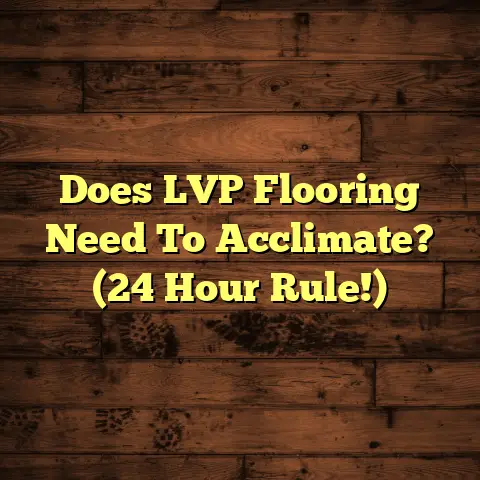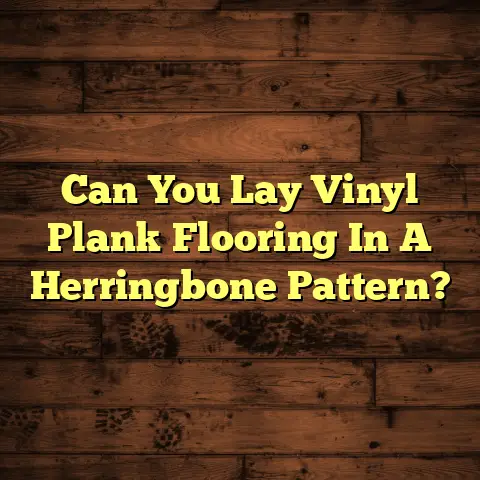Understanding Tile Edge Trim (4 Trim Types!)
Proper tile installation isn’t just about making things look pretty. It’s about creating a clean, safe, and healthy environment for you and your family. I’m talking about reducing those sharp edges that can lead to nasty cuts, especially if you have kids running around or elderly folks who might be a bit unsteady.
And get this – tile edge trims can also be a secret weapon against dust and grime! By creating a smooth, sealed edge, they prevent dirt from getting trapped, making cleaning a breeze and improving your indoor air quality.
So, let’s dive into the world of tile edge trim and see how these unassuming pieces can transform your home. I’ll walk you through the different types, their benefits, and how to choose the right one for your project. Let’s get started!
Section 1: What is Tile Edge Trim?
Tile edge trim is essentially a finishing piece that covers the exposed, often sharp, edges of your tiles. Think of it as the unsung hero of tile installation. It’s used in both homes and commercial spaces to create a clean, professional look.
You’ll find tile edge trim in all sorts of places:
- Countertops: Protecting the edges from chipping and providing a smooth surface.
- Floors: Creating a transition between tiled areas and other flooring types.
- Walls: Finishing off tiled backsplashes or shower surrounds.
Choosing the right edge trim isn’t just about aesthetics. It’s about functionality, durability, and ensuring a long-lasting, safe installation. Trust me, using the wrong trim can lead to problems down the road, like cracked tiles or water damage.
Section 2: The Health Benefits of Tile Edge Trim
Now, let’s get to the heart of the matter: the health benefits! I know, it might sound a bit dramatic, but hear me out.
Injury Prevention
Those sharp, exposed tile edges? They’re just waiting to give you a nasty scrape. I’ve seen it happen countless times, especially with kids and pets. Rounded edges or protective trims act like a buffer, significantly lowering the risk of cuts and scrapes.
Think about it: a bullnose trim on a countertop creates a smooth, forgiving edge, while a Schluter trim on a shower wall prevents those sharp corners from becoming a hazard.
Hygiene
Here’s a fun fact: grout lines and exposed tile edges are notorious for trapping dirt, grime, and bacteria. Edge trims create a sealed barrier, preventing these nasties from accumulating. This makes cleaning easier and promotes a healthier living space.
According to a study by the National Sanitation Foundation (NSF), grout can harbor all sorts of bacteria, including E. coli and Salmonella. Tile edge trim helps minimize these risks by creating a more hygienic surface.
Slip Resistance
This is particularly important in wet areas like bathrooms and kitchens. Certain edge trims, especially those with textured surfaces, can provide better grip and safety, reducing the risk of slips and falls.
I often recommend Schluter trims in showers because they have a slightly textured surface that provides extra traction, even when wet. It’s a small detail that can make a big difference in preventing accidents.
Section 3: The Four Types of Tile Edge Trim
Alright, let’s get down to the nitty-gritty and explore the four main types of tile edge trim. I’ll share my insights and experiences with each one.
1. Bullnose Trim
What is Bullnose Trim?
Bullnose trim is characterized by its rounded edge, giving it a soft, finished look. It’s typically made from the same material as the tile itself, creating a seamless appearance.
Common Uses
You’ll often find bullnose trim used on:
- Countertops
- Stair edges
- Window sills
- Shower niches
Aesthetic Appeal
The rounded edge of bullnose trim adds a touch of elegance and sophistication to any space. It blends well with various design styles, from traditional to modern.
I’ve used bullnose trim in countless kitchen renovations, and it always adds a polished, high-end feel.
Health Benefits
The smooth, rounded edge is the primary health benefit of bullnose trim. It eliminates sharp corners, reducing the risk of cuts and scrapes, especially for children and the elderly.
2. Schluter Trim
What is Schluter Trim?
Schluter trim is a metal profile designed to protect tile edges and create a clean, finished look. It’s available in various materials, including aluminum, stainless steel, and brass.
Unique Features
Schluter trim is known for its durability and resistance to moisture. It’s also designed to accommodate movement in the tile assembly, preventing cracks and damage.
Role in Protecting Tile Edges
Schluter trim acts as a shield, protecting tile edges from chipping, cracking, and wear. It’s particularly useful in high-traffic areas or where tiles are exposed to impact.
Health Benefits
The primary health benefit of Schluter trim is its ability to prevent moisture damage. By creating a watertight seal, it prevents water from seeping behind the tiles, which can lead to mold growth and other health hazards.
In a 2017 study by the American Society for Microbiology, it was found that mold exposure can lead to respiratory problems, allergies, and other health issues. Schluter trim helps mitigate these risks by preventing mold growth.
3. Quarter Round Trim
What is Quarter Round Trim?
Quarter round trim is a small, rounded molding that’s typically used to cover gaps between the tile and other surfaces, such as baseboards or cabinets.
Typical Applications
You’ll often find quarter round trim used:
- Where tile meets baseboards
- Around bathtubs and showers
- Where tile meets cabinets
Blending Flooring with Baseboards
Quarter round trim creates a seamless transition between the tile and other surfaces, giving the room a finished, polished look.
Health Benefits
Quarter round trim helps maintain cleanliness and hygiene by preventing dirt and debris from accumulating in the gaps between the tile and other surfaces. This makes cleaning easier and reduces the risk of mold growth.
4. Jolly Trim
What is Jolly Trim?
Jolly trim is a type of metal or PVC trim that provides a clean, finished edge to tile installations. It has a distinctive L-shape that wraps around the edge of the tile, creating a neat, professional look.
Common Uses
Jolly trim is commonly used on:
- Wall corners
- Shower niches
- Backsplashes
Benefits in Providing a Finished Look
Jolly trim provides a clean, crisp edge that enhances the overall aesthetic of the tile installation. It’s available in various colors and finishes to match the tile and complement the design.
Role in Maintaining Safety
Jolly trim prevents sharp edges, making it safer for homeowners, especially in areas where children or elderly individuals may be present.
Section 4: Choosing the Right Tile Edge Trim
Okay, so how do you choose the right tile edge trim for your project? Here are a few factors to consider:
- Type of Tile: The type of tile you’re using will influence the type of trim you need. For example, thicker tiles may require a wider trim.
- Location: The location of the tile installation will also play a role. Wet areas like bathrooms and showers require trims that are resistant to moisture.
- Design Preferences: Of course, you’ll also want to consider your personal style and design preferences. Choose a trim that complements the tile and enhances the overall look of the space.
- Material: Consider the material of the trim. Metal trims are durable and long-lasting, while PVC trims are more affordable.
- Color: Choose a color that matches or complements the tile. You can either blend the trim with the tile for a seamless look or use a contrasting color for a bolder statement.
- Size: Make sure the trim is the right size for the tile. It should fit snugly and provide adequate coverage for the exposed edge.
Conclusion
So, there you have it! A comprehensive guide to understanding tile edge trim and its health benefits. As you can see, these unassuming pieces play a crucial role in creating a safe, healthy, and beautiful home.
I hope this article has given you a better understanding of the different types of tile edge trim and how to choose the right one for your project. Remember, investing in quality tile edge trims is an investment in the long-term health and beauty of your home.
Call to Action
Now, I’d love to hear from you! Share your experiences with tile edge trims and how they have benefited your homes in terms of safety, hygiene, and aesthetics. What are your favorite types of trim? Any tips or tricks you’d like to share? Let’s start a conversation in the comments below!
I’m eager to hear your thoughts and experiences. Let’s learn from each other and create healthier, safer homes together. Happy tiling!





